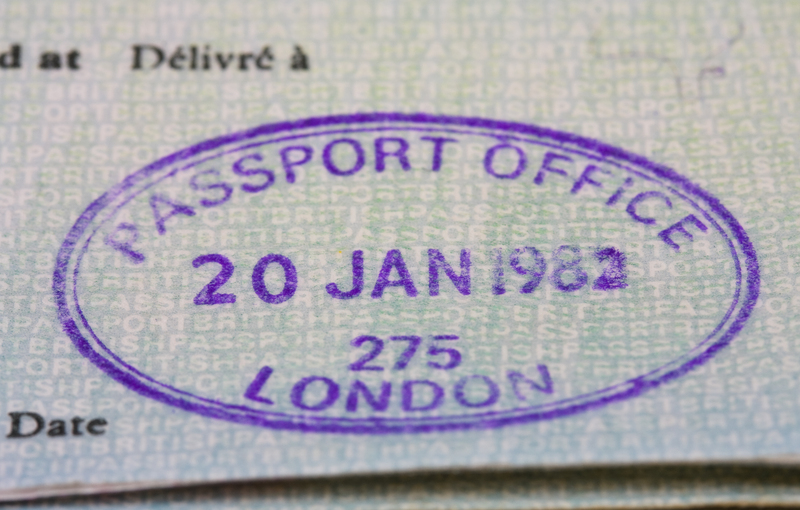Keep Your Freezer Safe and Stored Securely When Idle
Posted on 03/06/2025
Keep Your Freezer Safe and Stored Securely When Idle: The Ultimate Guide
Have you ever wondered how to keep your freezer safe and securely stored when it's not in use? Properly storing an idle freezer is essential, not only for energy savings but also for extending its lifespan and ensuring your safety. In this comprehensive guide, we'll explore the best strategies and expert tips to keep your freezer protected, well-maintained, and ready-to-use even after long periods of inactivity.
Why Should You Safeguard Your Idle Freezer?
Freezers are a significant investment in any home or commercial setting. They play a crucial role in food preservation, but when not in use, they can become a source of problems such as mold, odors, pest infestations, and electrical hazards. Keeping your freezer safe and storing it securely when idle should never be overlooked.
- Preventing Unpleasant Odors: Leftover food particles and moisture can quickly cause mold and bad smells.
- Minimizing Risk of Damage: Proper storage reduces the risk of rust, corrosion, and system failure.
- Enhancing Longevity: Taking care of your freezer extends its working life substantially.
- Environmental Impact: Unused freezers can consume phantom power if left plugged in, wasting electricity and money.

Step-by-Step: Preparing Your Freezer for Idle Storage
1. Defrost and Clean the Freezer Thoroughly
Before storing your freezer, start with a complete defrost cycle. Remove all food, unplug the unit, and let any ice buildup melt entirely. This will prevent water damage and mold growth during idle periods.
- Remove Shelves and Drawers: Take out removable parts for easier cleaning.
- Wash all surfaces: Use a mild soap solution or a mix of baking soda and water to eliminate bacteria and odors.
- Dry Completely: Leave the door open for several hours to guarantee there's no trapped moisture.
2. Choose the Right Location for Storage
Find an ideal place to store your freezer when not in use. The location influences its preservation and ease of reactivation.
- Cool and Dry Area: Keep it away from direct sunlight and damp spots to avoid rust and internal damage.
- Level Surface: Ensure the freezer is on solid, flat ground to protect the compressor and prevent tipping.
- Avoid Outdoor Exposure: Moisture and fluctuating temperatures outdoors can degrade exterior and interior components.
3. Leave the Door Slightly Open
When storing your freezer for an extended time, always leave the door slightly ajar. This critical step prevents moisture buildup, mold formation, and unpleasant odors that can ruin your appliance.
- Use a Door Wedge: Place a towel, block, or special freezer door wedge to keep it from closing unintentionally.
- Protect from Pests: Consider covering the opening with mesh fabric to keep rodents and insects out while allowing air circulation.
4. Secure and Store Accessories Separately
Make sure all trays, drawers, and ice makers are cleaned and carefully stored. Avoid leaving them inside the freezer, as trapped moisture can cause mold and bad smells.
Keep accessories in a clearly labeled storage bin nearby so you can easily assemble your freezer when you need it again.
5. Unplug and Protect the Power Cord
Unplugging your freezer while idle is vital to conserve energy and avoid electrical risks. Coil the power cord and secure it with a cable tie or twist-tie. If possible, tape the cord to the back of the unit to prevent it from dragging on the ground or becoming damaged.
How to Keep Your Freezer Safe When Storing Long-Term
For those planning to leave their freezer unused for months or even years, there are additional steps to reinforce safety and prevent deterioration:
Inspect for Pests and Moisture
Regularly check the storage area for rodent activity and excess humidity. Pests can chew wires and seals, while moisture can corrode metal parts and promote mold.
Use Desiccants or Baking Soda
Placing a box of baking soda or silica gel packets inside the freezer (with the door propped open) will absorb lingering moisture and neutralize odors.
Elevate the Freezer
If storing in a garage or basement where water leaks are possible, place the freezer on a pallet or sturdy risers. This simple precaution can save your appliance from water damage.
Cover the Freezer
Use a breathable cover--such as an old sheet or cloth. Tight, airtight plastic wraps aren't recommended, as they can trap condensation and encourage rust or mildew.
How to Store Your Freezer for Short-Term Inactivity
- Clean the freezer, but you may not need to fully defrost if it's only idle for a week or two.
- Turn temperature to its lowest setting or to "vacation mode" if your freezer has one.
- Leave the door slightly open to prevent odor buildup.
- Keep the unit plugged in if you expect to resume use soon, but empty it of all perishable food.
Essential Tips for Freezer Safety and Secure Storage
Label and Track Idle Appliances
Keep a log of when you last used or cleaned your freezer, and schedule reminders for regular checks--especially if it's stored in an out-of-the-way location.
Disconnect Water Supplies (If Applicable)
If your freezer features a built-in ice or water dispenser, shut off and drain water lines before storage to prevent leaks, freezing, or bacterial growth.
Inspect Seals and Hinges
Door gaskets and hinges should be wiped clean and treated with a thin layer of petroleum jelly to prevent dry cracking or sticking.
Store Freezer Upright
Never lay a freezer on its side--even while moving or storing. This can cause refrigerant oil to leak into the cooling system, leading to compressor failure.
Common Mistakes to Avoid When Storing Freezers
- Leaving food inside: Even non-perishable items can attract pests and start to break down, creating foul odors.
- Failing to clean and dry thoroughly: Any leftover dampness promotes bacterial growth and corrosion.
- Sealing the door tightly shut: Completely shut doors can trap moisture and cause internal mold.
- Ignoring power status: Unplug idle units to save energy and prevent electrical hazards.
- Storing outdoors: Exposure to weather extremes and humidity deteriorates components quickly.
What About Chest Freezers vs. Upright Freezers?
While the core guidelines for freezer safety and secure storage apply to both chest and upright models, each has unique considerations:
- Chest Freezers: Often have heavier, tighter seals and may require added effort to keep the lid propped open. Ensure interior baskets are aired out and dry.
- Upright Freezers: Easier to prop open, but internal shelves and door bins must be removed and cleaned to avoid accumulating grime.
Tip:
Leave a visible note on the door reminding anyone near the freezer of its storage status and that the door should remain open/ajar. This can prevent accidental closure, especially in shared spaces.
Maintaining Idle Freezers: Periodic Checkups
Even when stored correctly, your idle freezer will benefit from occasional attention. Every few weeks or months:
- Double-check that the door remains slightly open and the area is clean and dry.
- Look for early signs of rust, mold, or pest intrusion.
- Wipe down surfaces as needed, and replace the box of baking soda or desiccant if it becomes saturated.
Preparing Your Freezer for Future Use
When you're ready to reconnect and use your stored freezer, follow these steps:
- Remove desiccants or any objects used to hold the door open.
- Wipe interior and exterior surfaces with a clean cloth.
- Plug in the unit and allow it to reach full temperature (typically 24 hours) before adding food.
- Check for any unusual odors or signs of damage--address these before filling with food.
Eco-friendly Disposal or Long-term Storage
If you don't plan on using your freezer again, consider eco-friendly options for recycling or donating the appliance. Many organizations will pick up old appliances, ensuring that harmful refrigerants are handled safely and components are recycled or reused.

Frequently Asked Questions: Freezer Safety and Idle Storage
Is it safe to leave a freezer unused but plugged in?
It's not recommended. Leaving a freezer plugged in while empty and idle wastes energy and could pose electrical hazards. Unplug the unit, clean thoroughly, and keep the freezer door open to prevent issues.
Can I store my freezer in an outdoor shed?
It's best to avoid outdoor storage. Temperature extremes, high humidity, and pests can quickly damage the appliance. If outdoor storage is your only option, ensure the area is dry, covered, and protected from the elements.
What can I use to keep the freezer door open safely?
You can use a block of wood, a purpose-made appliance door prop, or a rolled towel. Just ensure the freezer won't tip over, and the door remains fully ajar for ventilation.
How do I prevent mildew and mold inside the freezer?
Thorough cleaning and drying before storage--and keeping the door open--are the best preventions. Adding a desiccant or baking soda also helps absorb excess moisture and odors.
Conclusion: Keep Your Freezer Safe and Stored Securely When Idle
Proper idle storage for your freezer is not just about tidiness--it's about preserving your appliance, ensuring household safety, and saving on costs down the road. By thoroughly cleaning, drying, unplugging, and propping the door open, you can prevent a host of common issues from mold to mechanical failures. Regular checkups and eco-friendly disposal, when necessary, complete the checklist for responsible freezer ownership.
Remember: Whether you're storing your freezer for a short break or putting it away long-term, a little attention ensures your investment remains safe and ready for use. With these practical steps, you can rest assured that your freezer will function flawlessly the next time you need it.



